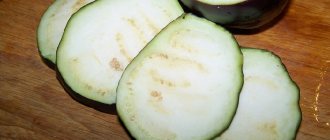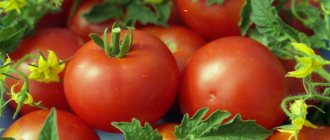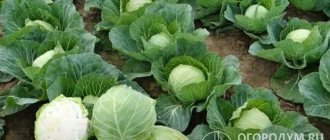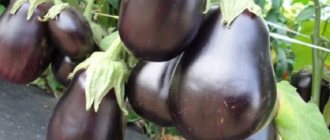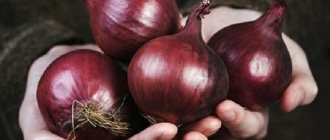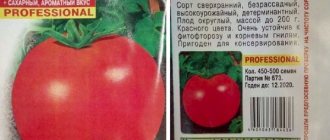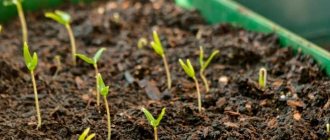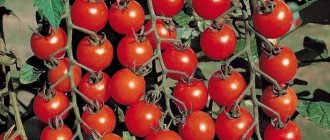Zucchini belongs to the Pumpkin family. These vegetables are widely used to prepare a variety of dishes. Therefore, zucchini is a popular crop in garden plots. Zucchini means "pumpkin" in Italian. This is a small, early-ripening zucchini of small size.
Zolotinka is a zucchini squash, yellow-fruited, cultivated in Russia since the 80s of the last century. Due to its fertility, taste and decorative appearance, this variety is still popular. Zolotinka yellow-fruited squash is a dietary product suitable for feeding both small children and adults who follow a proper diet. Zolotinka zucchini is consumed raw (young fruits), stewed and fried. It is also good for canning - crispy, sweetish, and retains its beautiful yellow color.
Description of yellow-fruited squash Zolotinka
Yellow-fruited squash of the Zolotinka variety is a small bush plant reaching 40 cm in height. In adulthood, small lashes are formed. The leaves are carved, thornless, powerful. The fruits are oval, golden in color. The peel is smooth, thin and dense. The size of vegetables reaches 15 cm, weight up to 1 kg. The pulp is pale yellow, sometimes with a pink tint. The sugar content in fruits is 4.2-4.5%.
Zolotinka zucchini
It is recommended to remove fruits up to 0.5 kg. These zucchini are the healthiest. They are juicy and tender. You can eat them raw. It is not necessary to remove the skin.
Note! Zolotinka is a self-pollinating variety. Most of the flowers are female. Therefore, this crop can be grown both in open ground and in greenhouses.
According to the description of Zolotinka zucchini, this is an early ripening variety. The period from seed germination to fruit ripening is 45-55 days. It has good productivity. Over the summer, up to 15 fruits are collected from one plant. These zucchini have a long shelf life. Able to retain their culinary qualities for up to 2 months.
Zolotinka zucchini is not frost-resistant. Outdoors, the variety is cultivated in areas where there is no frost for about three months. In areas with a more severe climate or to obtain an early harvest, it is better to grow in greenhouses or use seedlings. As temperatures drop, fruiting decreases.
Growing zucchini in greenhouses
The Zolotinka variety is resistant to powdery mildew. Like all zucchini, it is susceptible to attack by spider mites, whiteflies and melon aphids.
Advice! Zucchini Zolotinka is an early ripening plant. Therefore, you should not use chemical pest control products. For prevention and protection against insects, you can use traditional methods.
Storage
Zolotinka variety zucchini is characterized by high keeping quality. They do not lose their commercial and taste qualities for a long time.
Young zucchini of small size and technical ripeness without refrigeration, at an air temperature of no more than 25 degrees Celsius, retain their presentation and taste for 3-4 days.
In the refrigerator, in a plastic bag with ventilation holes or in a paper bag, baby squash will keep for up to 3 weeks. The optimal storage temperature is 4-6 degrees Celsius.
Zucchini of biological maturity can be stored in a dark, cool, well-ventilated place for up to 6 months. At the same time, the peel becomes harder and rougher, and the pulp becomes looser.
Important! The larger the zucchini, the longer it will last.
Features of care
Zucchini Aeronaut
The Zolotinka variety is quite demanding on soil. Prefers a light, drained, fertile, neutral substrate. Does well on loamy soils. The soil must be heated. If the soil is acidic, peaty or heavy, clayey, plant growth slows down, shoots and fruits become smaller, and productivity decreases. To correct the situation, rotted manure, phosphorus-containing fertilizers, and wood ash are added to the soil. For better growth and fruiting, you can spray it with urea 2 times (1 tbsp per 10 liters of water). The period between spraying is 2 weeks.
Due to the fact that Zolotinka is an early ripening variety, it is not advisable to feed it with nitrate fertilizers. Otherwise, chemicals will accumulate in the fruit. Instead, compost is added to the planting hole.
Compost
The soil for zucchini should be constantly moist, without stagnant water. This is an important care condition for flowering and fruit formation. During drought, the ovaries may fall off. Water with warm water 1-2 times a week.
Need to know! If the petals remain on the ovaries after wilting, they must be carefully removed. Otherwise, the fruits may rot.
The variety is grown in areas where cruciferous, legume or nightshade plants used to grow. Root vegetables are also preferred among the predecessors. If zucchini is planted where squash plants used to grow, they can become infected with diseases of the previous plants.
Zolotinka zucchini is planted in open, sunny places. These spaces must be well heated and ventilated to prevent rotting.
Bush squashes, including zucchini, do not crop. The fruits of these plants are formed on the central stem. Due to its structure, namely its short stature, Zolotinka does not require a garter. Only an adult plant, when small lashes begin to form, may need additional support. It is better to remove the lower leaves, then the zucchini will be better ventilated.
When small vines begin to form, the squash may need additional support.
How to plant?
Zolotinka is recommended to be planted with seeds. They need to be prepared for sowing. The seeds are kept in hydrogen peroxide. Use a 3% solution: take 3 ml of peroxide per 1 liter of warm water. Leave the seeds for 30 minutes. Some of them may float. Such material is discarded.
After peroxide, the seeds are washed and kept in a biogrowth stimulator. They use “Epin”, “Zdraven”, “Humates +7”. Prepare the solution according to the instructions indicated on the package. "Epina" take 2.5 ml/5 l of water. Leave the seeds in the solution for 30 minutes.
Instead of a biostimulant, you can use a simpler remedy - melt water. The material is kept in it for up to 12 hours. These activities “awaken” the seeds and start the metabolic process.
You can sow immediately or wait until the seeds ripen and sprout. To do this, they are kept in a damp cloth. Temperature during the day is 18-20 C, at night 10 C; I put the seeds in the refrigerator. Seed hardening occurs at the same time. They adapt better when sown in open beds.
Zolotinka zucchini prefers sunny areas. It is recommended to use areas where carrots, cabbage, and legumes were grown for sowing. Zucchini can be planted in one place for no more than 3 years.
The culture grows well on loamy soils with the addition of sand. In the fall, it is necessary to carry out work to improve the quality of the soil. They bring in rotted manure and ash and dig up the ground.
Neutral acidity soil is preferable for the plant. To check the pH, you need to take a little soil and dilute it with water. Leave to infuse for 1-2 hours. All the earth will sink to the bottom. Water with salts dissolved in it will remain on the surface. Check acidity with test strips. Optimal pH 6.7 units.
On the package with seeds, the manufacturer indicates that when sowing it is necessary to adhere to the 60*60 cm pattern. The holes are arranged in a checkerboard pattern in 2 rows. A 1 m wide path is provided between the blocks. This makes it more convenient to care for plants and harvest:
- sowing is carried out when the daytime air temperature has reached 20 C, and the night temperature does not fall below 10 C. At 8 C the plant does not develop, but does not die;
- a hole 5 cm deep is prepared in the hole. At this depth, the soil temperature should not be lower than 15 C. To achieve the necessary parameters, the area is warmed under a film. You can organize film tunnels for zucchini so that the seeds ripen fully. The film will protect them from the effects of precipitation and daily changes.
- the ground should be soft and moist.
- The seeds are covered with soil and covered with film.
- sprouts appear after 14 days. When the stems and leaves begin to develop, the film is removed.
- Watering is carried out after 3-4 days, if necessary.
- The recommended watering regime is once every 10 days. If the soil is heavily moistened, a fungus may develop under the film, which should not be allowed.
View this post on Instagram
Publication from Daria Gerasimov (@dasha26_05) July 9, 2022 at 1:10 PDT
The optimal development temperature for zucchini is 25 C. When sowing, it is necessary to take into account climatic conditions. In the southern regions in early May there are usually no night frosts, the air temperature is comfortable. Sowing can be done. In this case, the harvest can be harvested in mid-June.
Sowing and growing seedlings
Zucchini Skvorushka
Yellow zucchini seeds are sown after frost. The distance between the holes should be at least 60 cm. 2-3 seeds are placed in each hole. For better germination, cover material is used. Even before the sprouts sprout, the soil is mulched. After the seedlings appear, the plants are pruned, removing weak shoots.
When 4-5 true leaves are formed, the plants are carefully hilled up. Then the root system will grow stronger and become more powerful.
If you start growing seedlings in April, then in the first half of June you can already harvest. When planting, use peat cups with specialized soil for seedlings.
Seedlings in pots
Transportation
Zolotinka zucchini is transportable, perfectly tolerates transportation over long distances while maintaining its presentation.
For long-term transportation of zucchini, a refrigerator is best suited.
Zucchini of technical maturity requires a temperature in the range of 5 to 10 degrees Celsius and an ambient humidity of at least 95%. Provided there is free circulation of air masses, they retain their consumer properties for up to 14 days.
Zucchini of biological maturity can be transported at a temperature of 10 degrees Celsius and air humidity of 50-70%. If stored properly, their presentation will last up to 180 days.
Advantages and disadvantages of the variety
Zucchini Cavili
The advantages of the yellow-fruited Zolotinka squash include its fertility (forms many ovaries) and early ripening of the crop even in a temperate climate. The bush has a compact shape. Zolotinka zucchini are varietal, so you can collect the seeds yourself for sowing next year.
The young fruits of this variety are quite pleasant and delicate in taste. They have a beautiful bright yellow color, which is preserved during preservation. The taste of the fruit is not fresh. Some people find it reminiscent of the sweetish taste of pumpkin or asparagus.
Zolotinka zucchini is great for long-term storage
Note! Ripe fruits have excellent shelf life during winter storage.
Excess vegetables can be used to feed livestock.
Zolotinka is not susceptible to disease and tolerates temperature changes. The fruit contains useful microelements and vitamins. This variety is used in cosmetology. Its medicinal properties are used to cleanse the body.
The disadvantage of zucchini Zolotinka is the rapid overripening of the fruit. These zucchini have a rougher skin. The ripened fruits are large, with a large seed chamber, and become fibrous and rough.
If you follow agricultural practices and harvest on time, Zolotinka is ideal for second courses and canning, decorating them with its sunny color.
5 1 vote
Article rating
Bottom line
The Zolotinka variety, popularly known as zucchini, is an excellent option for a tasty and healthy vegetable that does not require serious care, but produces a huge harvest.
Main advantages:
- original fruit color
- high yield
- long-term preservation of presentation
- high levels of sugar in the composition, which affects frequent use in the production of juices and baby food.
Minuses:
- grow best in warm conditions;
- If you don't pick them on time, they quickly become overripe.
Typical cultivation mistakes
When growing, gardeners make a number of typical mistakes that reduce yields and impair quality characteristics:
- Allow plantings to freeze without covering them at night. As a result, a decrease in temperature to 10°C and below causes poor-quality pollination, which leads to the absence of ovaries, yellowing and rotting.
- Fertilizing is done incorrectly. The absence of potassium or its insufficient proportion in mineral fertilizers leads to the appearance of deformed pear-shaped fruits, swollen downwards. This can be corrected by fertilizing the plantings with ash (0.5 liters of powder per bush) or spraying with Uniflor-bud (2 tsp per 10 liters of water). The lack of nitrogen in the soil, on the contrary, leads to narrowing of the tips of vegetables and their lightening; it is possible to compensate for its deficiency by adding manure or bird droppings.
- They do not maintain regular watering. Lack of moisture is the main cause of end rot in large vegetables.
Use in cooking
Zucchini is widely used in culinary arts: they are fried, boiled, steamed, stewed and stuffed.
Young “milk” zucchini are suitable for use raw in salads, smoothies, and vegetable cocktails.
The Zolotinka variety of zucchini is excellent for pickling and freezing. When canned, the zucchini pulp retains its density and delicate creamy color.
Zolotinka makes delicious, beautiful amber-colored jams and confitures with lemon, cherry plum, grapes and red currants.

